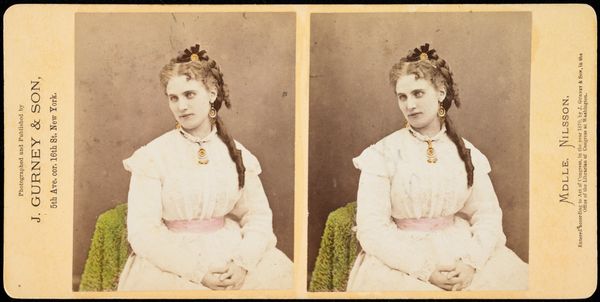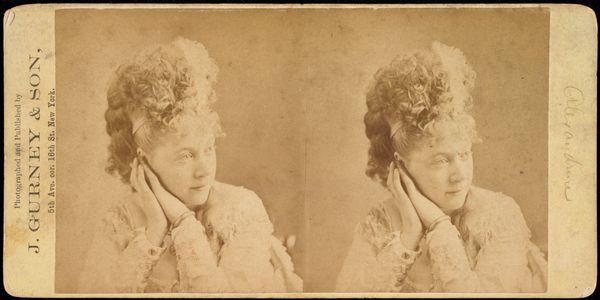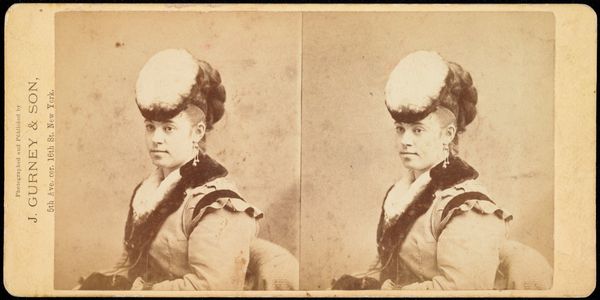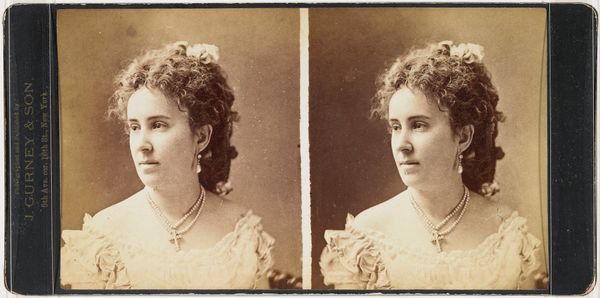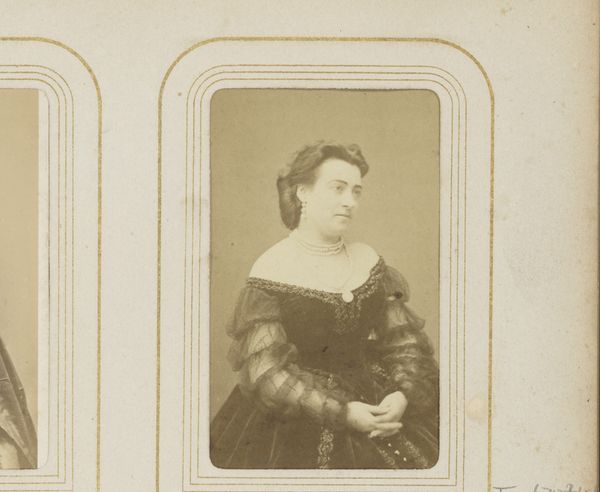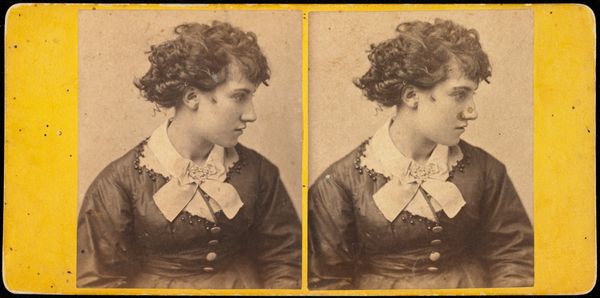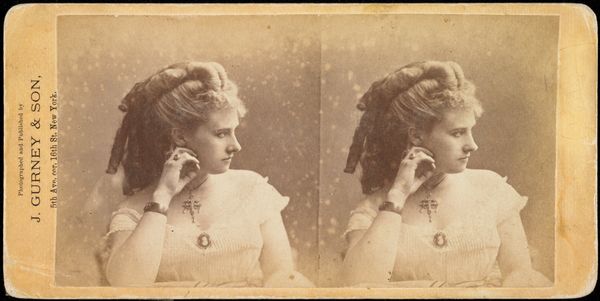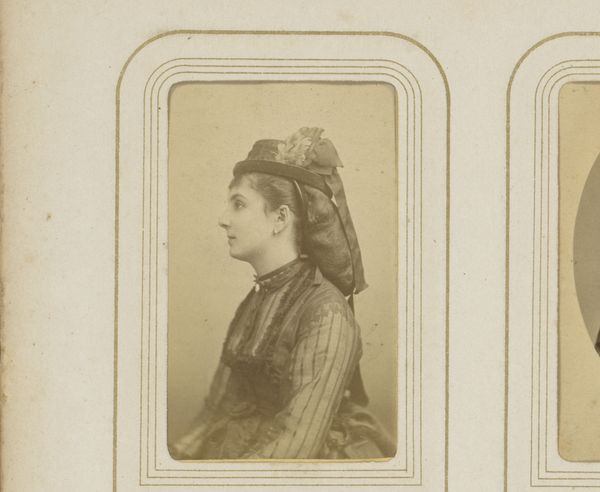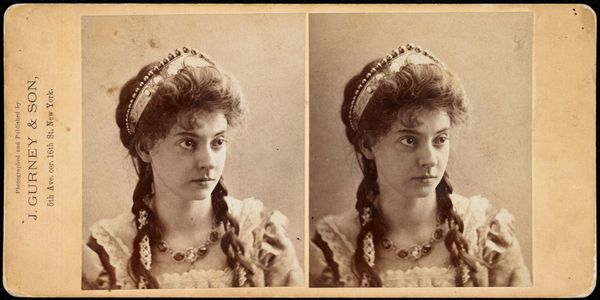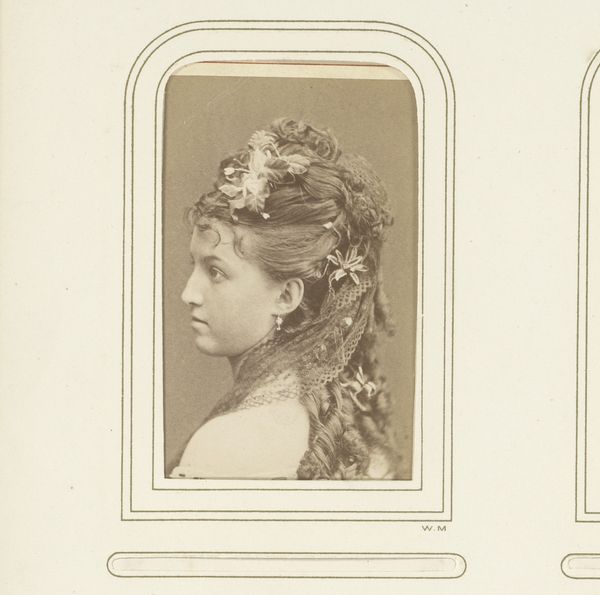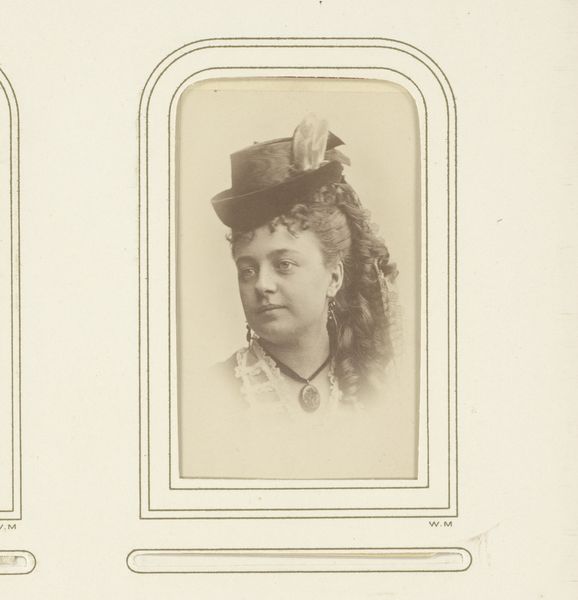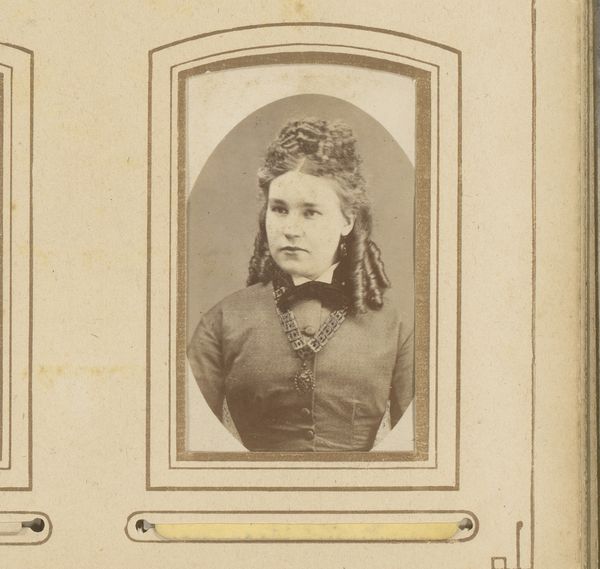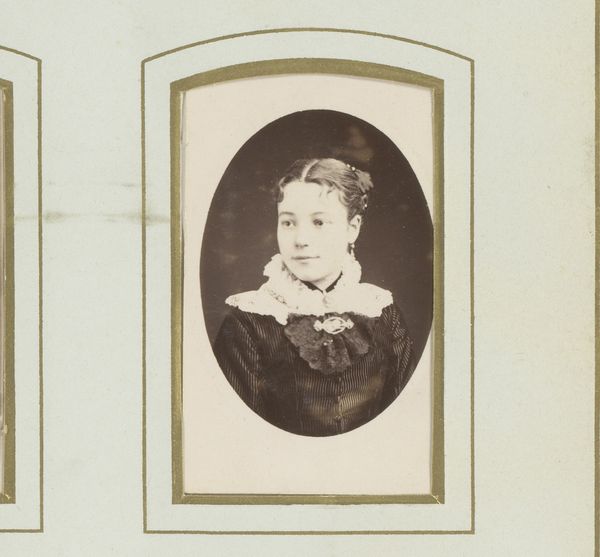
photography
#
portrait
#
photography
#
united-states
#
portrait drawing
Dimensions: 3 1/4 x 5 13/16 in. (8.26 x 14.76 cm) (image)3 3/8 x 6 7/8 in. (8.57 x 17.46 cm) (mount)
Copyright: Public Domain
Editor: Here we have Jeremiah Gurney's photograph "Demourt," taken between 1869 and 1874. It's a fascinating portrait. The subject’s gaze and elaborate hairstyle give it a rather regal, if somewhat melancholic, feel. What strikes you most about this piece? Curator: What I find compelling is the sitter's expression paired with her styling; the shaved temple challenging the period's conventions of beauty and propriety. Do you see how it almost hints at a subtle resistance? Gurney, working in a rapidly industrializing United States, captured an era where portraiture was becoming more accessible, yet still dictated by social norms. What narratives might be hiding within that tension? Editor: That's an interesting point about resistance. The photograph does feel staged in some way, and maybe her look is subverting what was expected? Curator: Exactly. This image prompts us to consider the power dynamics at play in portraiture, especially concerning gender and class. Who was Demourt? What was her agency in constructing her image? Considering photography’s role in shaping and perpetuating certain ideals, could her appearance here be seen as a subtle form of rebellion against these constraints? Editor: So, it’s not just about what is shown, but what is *implied* about her societal role. I hadn't considered that. Curator: Precisely. Analyzing this photograph through a feminist lens encourages us to unpack these visual codes and imagine the narratives of those often marginalized by historical accounts. Editor: This makes me see the portrait in a whole new light – far more complex than just a picture from the past! Curator: Indeed. And hopefully prompts deeper thinking about representation, power, and agency in art.
Comments
No comments
Be the first to comment and join the conversation on the ultimate creative platform.
